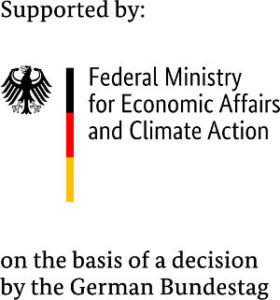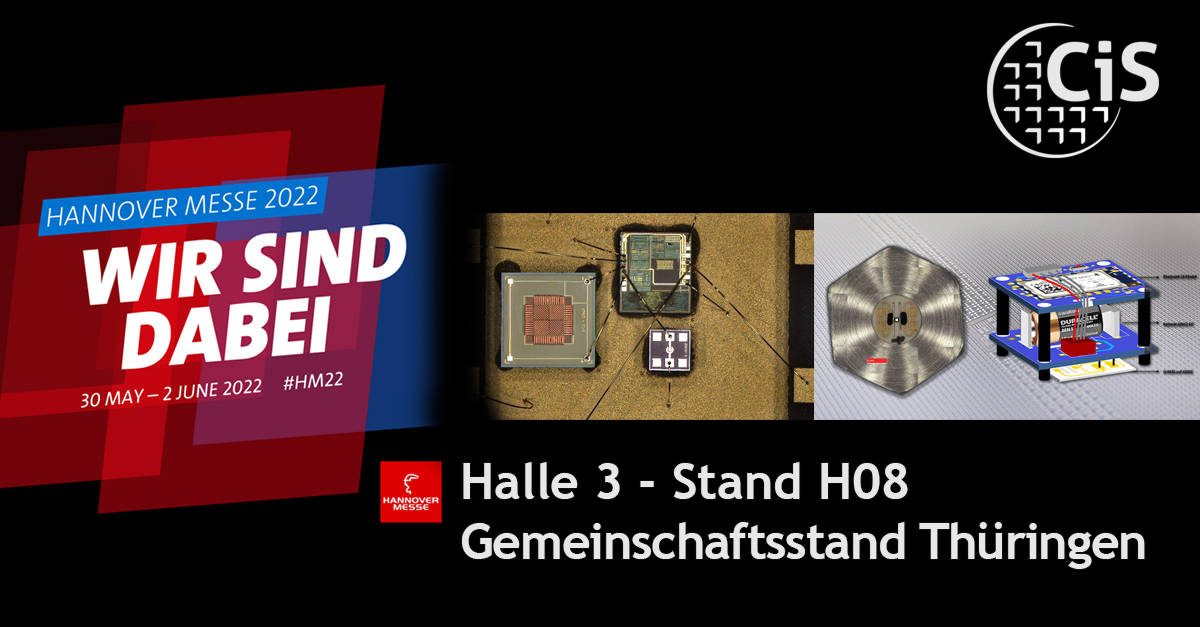After cancellations and postponements due to Covid-19, the Hannover Messe will take place next week for the first time again as a presence event on the exhibition grounds of the Deutsche Messe in Hannover. In Hall 3 at the Thuringian joint booth H08, the CiS Research Institute will present current development results and colleagues will be on site for interested visitors from May 30 to June 2, 2022. At the world’s leading trade fair for industry with a focus on digitalization and sustainability, we will also be showing two demonstrators, one for determining the operating force of fasteners or monitoring bolted joints, and another for detecting the CO2 concentration in gases using NDIR sensor technology.
This technological approach was recently awarded the prestigious AMA Innovation Prize. The innovative gas sensor system with novel spectral broadband infrared (IR) emitter combines groundbreaking technologies from MEMS chips to the gas sensor system with special long-term stability, thus enabling new applications for gas analysis even in extreme environmental conditions.
“In close cooperation with our industrial partners Micro-Hybrid Electronic GmbH, 5microns GmbH and Siegert TFT Thinfilm Technology GmbH, we have succeeded in developing long-term stable and highly dynamic infrared components based on our MEMS technologies and have now also started series production. These represent the core components of modern gas sensors, for which enormous market growth can be expected in the next few years – driven by building automation, medical technology and industrial process monitoring,” says Prof. Thomas Ortlepp, Managing Director of the CiS Research Institute for Microsensors, explaining the importance of this technology.
Bolted connections are often subject to great loads and play a central role in ensuring the functionality of fastening systems, for example in wind turbines. For the determination of the operating force of fasteners, a technology platform was developed that determines not only the preload force but also the operating force as well as its change over time for the monitoring of fasteners (especially bolted joints). The sensor module based on the technology platform is directly coupled to the fastener. The measurement signal processing or output can be integrated into customers’ measurement systems. Significant applications can be found in the monitoring of fastening systems in the wind power industry, railroad systems, high-rise buildings, vehicles and aircraft, gas plateaus as well as all inaccessible media pipelines (soil, water) and many more.
 This research and development work was funded by the German Federal Ministry of Economic Affairs and Climate Action (BMWK) in the research project “Determination of the operating force of fasteners (BAVI) (funding code: 49MF180163).
This research and development work was funded by the German Federal Ministry of Economic Affairs and Climate Action (BMWK) in the research project “Determination of the operating force of fasteners (BAVI) (funding code: 49MF180163).
The CiS Research Institute is also dedicated to research topics on green energies and hydrogen. For example, together with the partner company Materion GmbH, we developed special MEMS sensor chips, which are based on a measurement concept from Materion and detect the concentration of hydrogen by using palladium layers. Advantages lie in the broad concentration range, high selectivity and high miniaturization potential.

The solution was developed in the H2MEMS project as part of the BMBF-funded HYPOS consortium, the “Twenty20 Partnership for Innovation” funding initiative.




